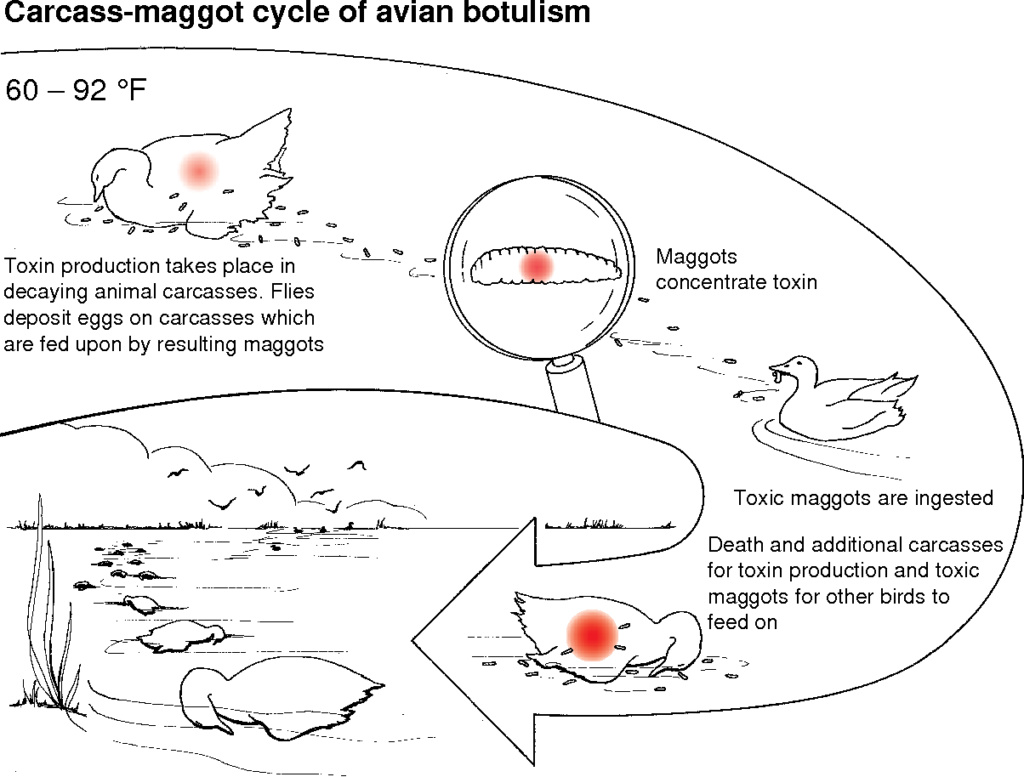Avian Botulism at Sambhar Lake killed thousands of birds – Diligent IAS 24/11/2019 – Posted in: Daily News – Tags: Indian Veterinary Research Institute, Sambhar Salt Lake
Avian botulism
For: Preliminary & Mains
Topics covered:
- About Avian Botulism – causes
- About Sambhar Salt Lake
News Flash
In a report released by the Indian Veterinary Research Institute (IVRI), Bareilly, Avian botulism killed 18,000 birds at Rajasthan’s Sambhar lake.
Avian botulism
- Avian Botulism is a strain of botulism that affects wild and captive bird populations, most notably waterfowl.
- Botulinum is a natural toxin produced by a bacteria known as Clostridium botulin. It produces the toxin when it starts reproducing. The bacteria is commonly found in the soil, river, and seawater.
- There are around eight types — A, B, C1, C2, D, E, F, and G — of botulinum toxin and they are distinguishable when diagnosed. But all types of toxins attack the neurons, which leads to muscle paralysis.
- Botulinum affects both humans and animals but the type of the toxin varies — botulinum C in birds and A, B and E in humans. The toxin has been recognised as a major cause of mortality in wild birds since the 1900s.

Avian Botulism
What happened at Sambhar Lake, Rajasthan
- According to IVRO report, the avian botulism that caused the mass die-off at Sambhar was caused by the climate.
- Water levels were fluctuating throughout the year. Locals reported that due to a good monsoon this year, the water level reached the lake bed.
- The good monsoon provided a favorable environment for the bacteria to spread. The bacteria needs anaerobic (absence of oxygen) conditions and does not grow in acidic conditions.
- The temperature of the water was about 25 degree Celsius. Its pH ranged between 7.4- 9.84. It also requires a nutrient-rich substrate, like areas with large amounts of decaying plant or animal materials. The monsoon brought with it a large population of crustaceans (like shrimps, crabs, and prawns), invertebrates (snails) and plankton (like algae).
- These living organisms are capable of hosting the bacteria for a long period of time. According to reports, the bacteria is also found in the gills and digestive tracts of healthy fish. It reproduces through spores and these spores remain dormant for years. They are resistant to temperature changes and drying. Under favourable conditions, the spores are activated.
- The IVRI report noted that after the monsoon, when the water levels receded, there might have been an increase in salinity levels which could have led to the death of these living organisms. At this point in time, the spores could have been activated.
Indian Veterinary Research Institute (IVRI)
- It was established in 1889. IVRI is one of the premier research institutions dedicated to livestock research and development of the region.
- Mission: Research and Development in veterinary and animal science to promote livestock and poultry health and production, generate human resources, develop and transfer technologies to ensure livestock production systems.
- Vision: Harness veterinary and animal science research and education for sustainable growth in the livestock sector so as to ensure food and income security.
Sambhar Salt Lake
- The Sambhar Salt Lake, India’s largest inland salt lake, is located 80 km southwest of the city of Jaipur, Rajasthan.
- It surrounds the historical Sambhar Lake Town. Sambhar Lake has been designated as a Ramsar site (recognized wetland of international importance).
Source: Down to Earth
READ MORE DAILY NEWS
- General Security of Military Information Agreement (GSOMIA)
- Mahila Sashaktikaran Scheme
- ‘Nadu-Nedu’ programme
- ‘Sindhu Sudarshan’ exercise
- Haryana to create new “Foreign Cooperation” Department
- Kimberely Process Certification Scheme
- Akash: India’s first home-made supersonic missile
- IMD World Talent Ranking Report 2019
You are on the Best Online IAS preparation platform. You are learning under experts.
We are present on Facebook- Diligent IAS, LinkedIn- Diligent IAS, YouTube- Diligent IAS, Instagram- Diligent IAS. Get in touch with us.
